In the diverse and colorful world of tropical fruits, Cocoplum is a hidden treasure. Often found growing wild along coastal areas or planted as a hardy ornamental shrub, this fruit holds culinary, cultural, and ecological value across its native range. While it may not yet be a globally traded commodity like bananas or mangoes, Cocoplum has a loyal following in tropical and subtropical regions. So — which country leads the world in Cocoplum production? Let’s explore the answer in detail.
What is Cocoplum?
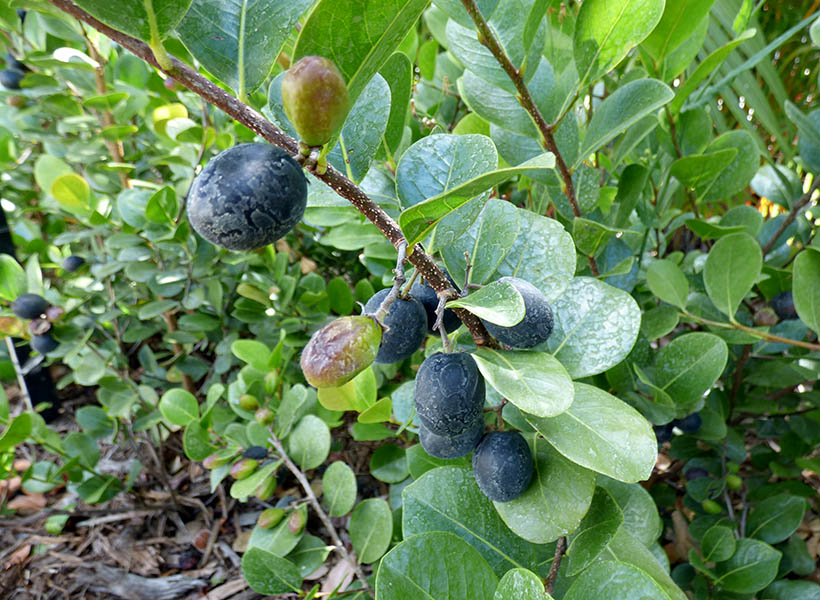
Cocoplum (Chrysobalanus icaco) is a small, evergreen shrub or tree in the family Chrysobalanaceae. Native to tropical regions of the Americas, it’s widely appreciated for:
- Its round, edible fruits ranging from white to dark purple
- Glossy green leaves and attractive foliage
- Hardiness in coastal, sandy, and salt-laden soils
The fruit has a mildly sweet, sometimes tart flavor and is enjoyed fresh or turned into jams, jellies, and preserves in many local cultures. Apart from its edible appeal, Cocoplum serves as an important ornamental plant and natural hedge for erosion control and beach landscaping.
Native Range and Global Distribution
Cocoplum is native to the tropical Americas and West Africa. Its natural habitats include:
- Florida and the Caribbean Islands
- Mexico, Central America, and Northern South America
- Coastal areas of West Africa
It thrives in coastal forests, swamps, wetlands, and tropical thickets, tolerating saline soils and sandy conditions better than many other fruiting plants.
Two main varieties of Cocoplum are typically recognized:
- Chrysobalanus icaco var. icaco – More coastal, salt-tolerant
- Chrysobalanus icaco var. pellocarpus – Inland, slightly taller shrub
Uses of Cocoplum
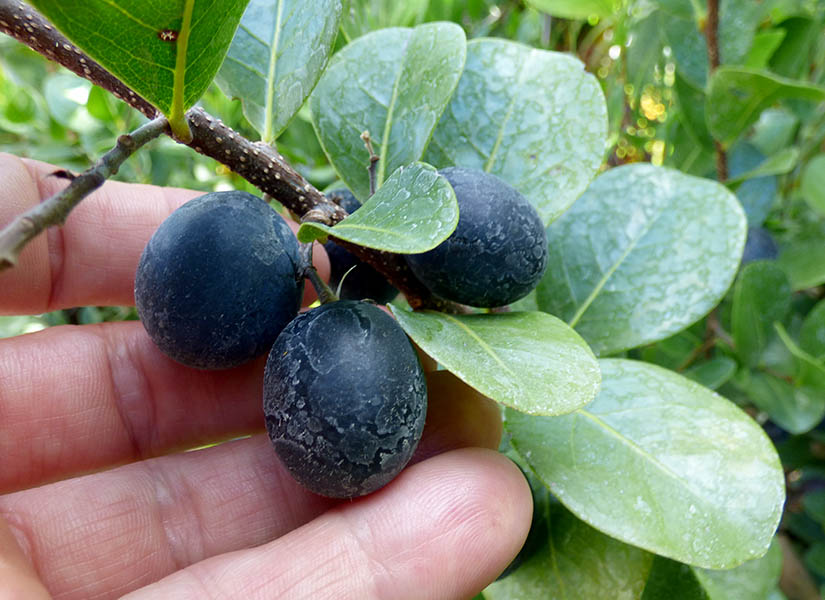
Cocoplum is a multipurpose plant with several valuable uses:
Culinary Uses:
- Eaten fresh as a mild, plum-like fruit
- Turned into jams, jellies, syrups, and candies
- Sometimes used in homemade alcoholic beverages
- Seeds are edible after roasting
Medicinal Uses:
In traditional medicine, various parts of the Cocoplum plant are used to:
- Treat fever and respiratory ailments
- Address digestive issues
- Heal wounds and infections
Ecological and Ornamental Uses:
- Popular in coastal landscaping
- Acts as a natural hedge and windbreak
- Controls soil erosion in beachside areas
- Provides habitat and food for birds and small mammals
Is Cocoplum Commercially Farmed?
Unlike globally traded tropical fruits such as mangoes or avocados, Cocoplum isn’t widely farmed on a commercial scale. It remains largely:
- Wild-harvested from native shrubs
- Grown in home gardens and local orchards
- Planted extensively as an ornamental shrub in urban and beach landscaping
Because of its adaptability, Cocoplum flourishes in both wild settings and cultivated landscapes across its native and introduced ranges.
Which Country is the Largest Cocoplum Producer?
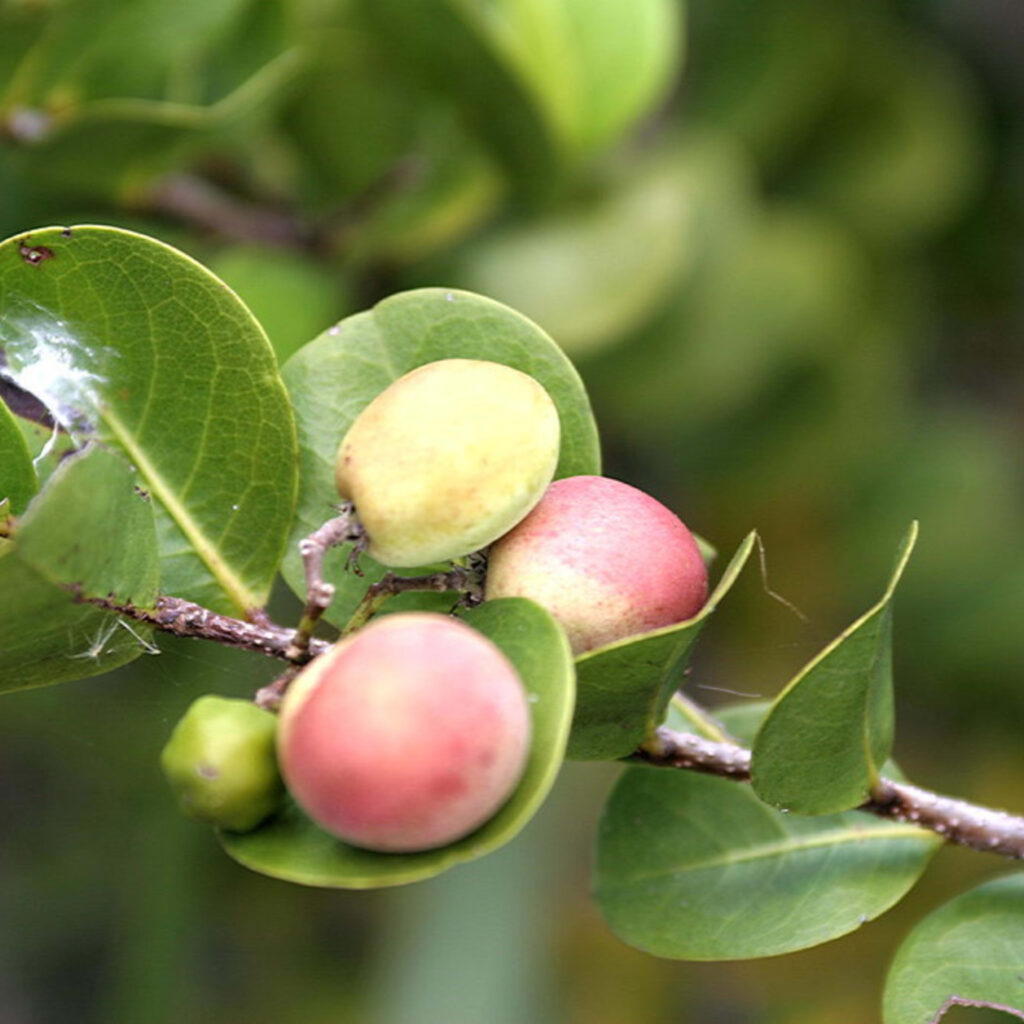
The United States, particularly the state of Florida, is the largest producer of Cocoplum in the world.
Why Florida Leads:
- Native to South Florida’s coasts, marshes, and wetlands
- Extensively planted along roadways, parks, and beachfront properties
- Frequently grown in private gardens and landscaping projects
- Abundant wild Cocoplum populations in Everglades National Park, Big Cypress National Preserve, and other coastal reserves
Even though the fruit isn’t cultivated in massive commercial plantations, the combined total of wild, ornamental, and home-grown Cocoplum plants in Florida far exceeds that of any other region.
Support for Cultivation:
The University of Florida’s IFAS Extension and other horticultural programs promote Cocoplum for:
- Erosion control
- Beachfront landscaping
- Native plant restoration
- Edible landscaping trends
This makes Florida not just the largest producer but also a regional leader in Cocoplum research, education, and horticultural innovation.
Cocoplum Production in Other Countries
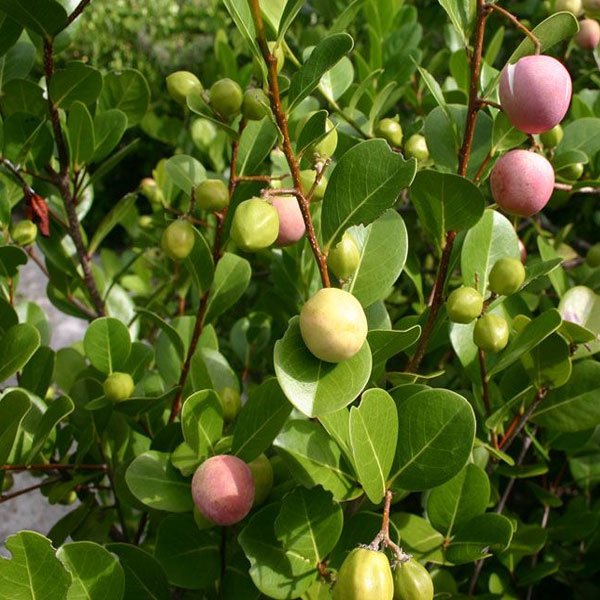
While Florida leads, Cocoplum remains a cherished plant in other tropical regions:
Caribbean Islands:
Cocoplum grows abundantly in countries like Jamaica, the Bahamas, and Cuba, where it’s both wild-harvested and cultivated in home gardens. The fruit is used in local preserves and desserts, and the plants play a significant role in beachside ecosystems.
Brazil:
In Brazil, known as “Icaco”, Cocoplum is foraged from coastal forests and savannas. It’s particularly popular in Bahia and other northeastern states for making traditional jams and candies.
Colombia & Venezuela:
Cocoplum shrubs are part of coastal forests and wetlands, with local communities consuming the fruit and using the plant medicinally.
West Africa:
In countries like Sierra Leone, Ghana, and Nigeria, Cocoplum (locally known by various names) serves as a subsistence fruit and traditional remedy, although it’s less prominent than in the Americas.
Why Cocoplum Matters Today
Even though Cocoplum isn’t a commercial cash crop, it holds growing importance in:
- Agroecology and permaculture systems
- Coastal resilience projects
- Native plant gardening
- Health-conscious, edible landscaping trends
Its adaptability to saline soils, strong winds, and poor-quality land makes it a valuable candidate for:
- Soil stabilization
- Urban greening projects
- Organic and sustainable farming initiatives
As the demand for indigenous, hardy, and climate-resilient plants increases, Cocoplum is slowly earning more recognition beyond its native habitats.
Potential for Future Commercialization
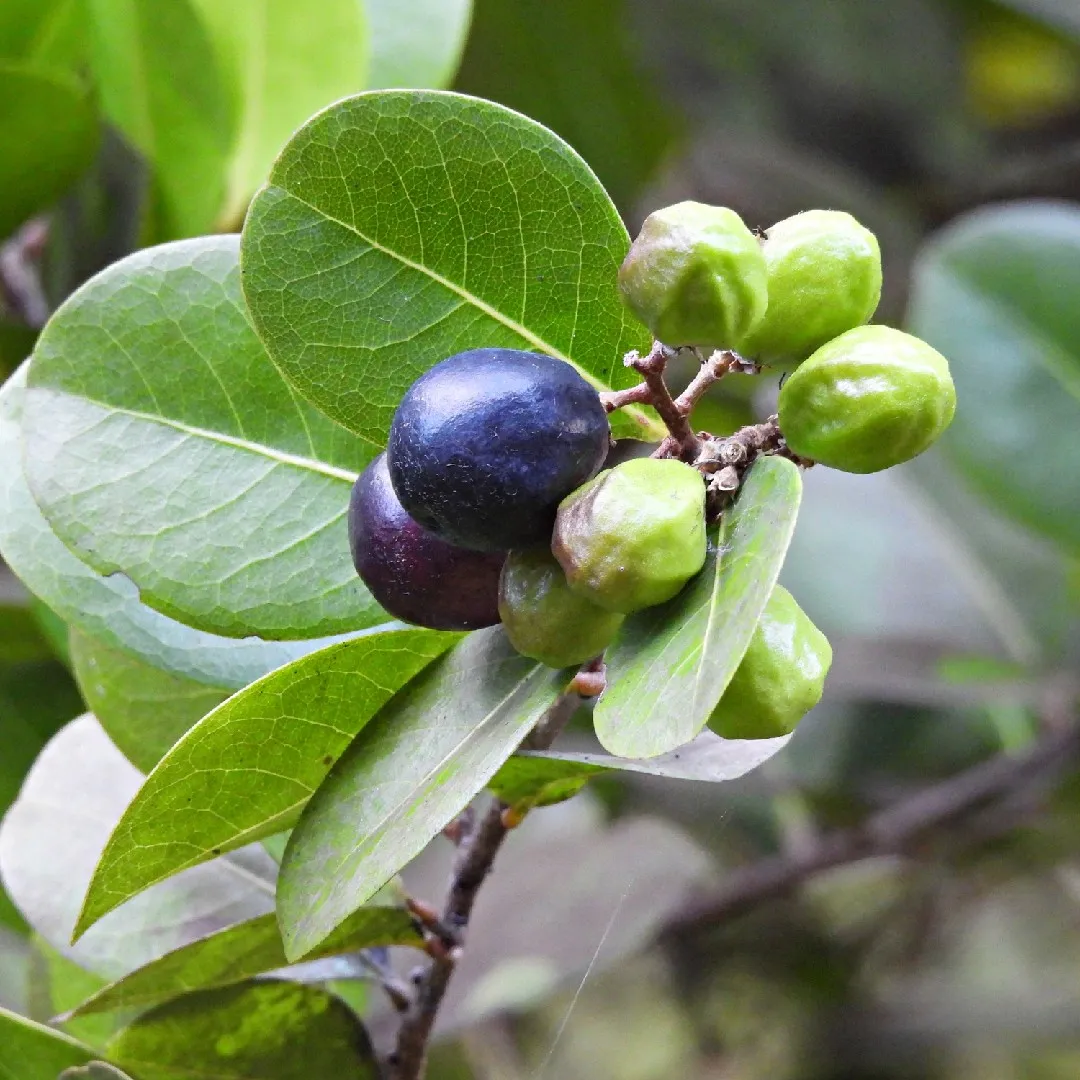
Cocoplum’s mild taste, high adaptability, and health benefits give it untapped commercial potential:
- Artisan preserves and syrups
- Specialty organic fruits
- Native edible hedging plants
- Coastal restoration projects
With increasing interest in underutilized fruits and native edibles, Cocoplum might see a rise in commercial cultivation, particularly in Florida and other coastal U.S. states.
Conclusion
To answer the central question: The United States, specifically the state of Florida, is the largest Cocoplum producer in the world. While other tropical regions like the Caribbean and Brazil treasure this hardy fruit, no other area matches Florida in terms of:
- Native wild populations
- Ornamental plantings
- Public awareness and horticultural support
Cocoplum remains a fruit of local and ecological importance, with the potential to play a bigger role in sustainable landscaping, artisan food products, and coastal resilience strategies in the years ahead.
Key Takeaways:
- Cocoplum is a native fruit-bearing shrub of the tropical Americas and West Africa.
- It’s used for food, medicine, landscaping, and ecological restoration.
- Florida leads the world in Cocoplum production, combining native growth and ornamental plantings.
- The fruit is valued for jams, preserves, and natural landscaping.
- Future potential lies in artisan products, sustainable farming, and edible native plant markets.

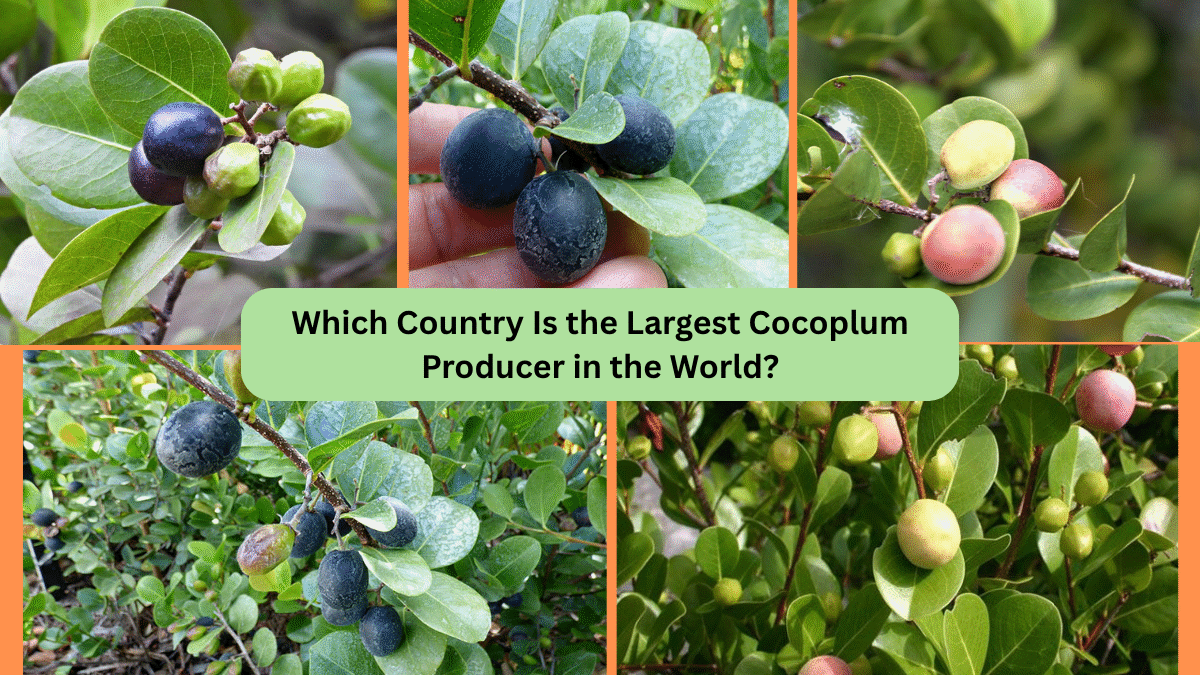




Leave A Comment